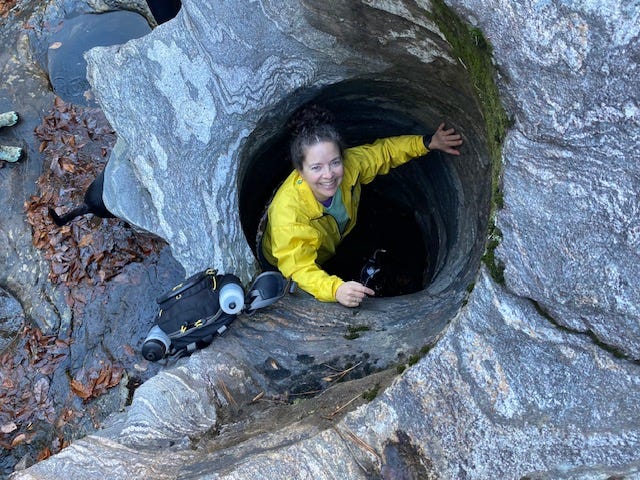Why is only half this tree changing color?
A mini-edition of Natural Wonders
This issue of Natural Wonders is a short compilation of a few brief stories, mainly because the Thanksgiving holiday meant I got busy with other things and didn’t have a chance to do a deeper dive into a bigger question. In the spirit of Thanksgiving, however, I’d like to thank all of you for being a part of this community of curious outdoor-loving people. Next week, December 7, is the two-year anniversary for this simple newsletter, and I’m extremely grateful you’ve decided to Wonder alongside me. Thank you!
Why is only half this tree changing color?
This week’s question comes from a reader - John - who noticed an odd sweetgum tree near his house. Half the tree has changed color to a dark burgundy while the other half remains a normal green. Why would only half a tree change color?
There are a few examples of two-toned trees I could find online. This one is a maple in Ohio that’s midway through changing its autumn colors:
Maples have a tendency to do this because the side that gets more sunlight can change a bit earlier than the rest of the tree. I love maples because they’re able to hold such depth of color in multiple areas of their canopy.
Another example was a tree going two-toned in the summertime:

In this case, the consensus was that half the tree has become damaged for some reason – either the trunk is beginning to split or perhaps the roots on that side have girdled the trunk. Either way, half the tree isn’t getting the nutrients it needs.
But that’s not what’s happening to John’s tree – it seems healthy and it’s not a colorful maple, so what gives?
My theory has to do with its trunk:
The tree splits in two fairly quickly, with the righthand side turning purple while the left remains green. I’m thinking that rather than this having been born a single tree that split into two main trunks, it’s actually two sweetgum trees that grew together early on.
When trees meld like this, it’s called inoculation, which I’ve written about before. Oftentimes the two trees (or sometimes two branches) will share nutrients with each other. But in this case, I wonder if the two trees have maintained their individuality and not combined systems, so to speak?
Any other ideas about what might cause this?
People mimicking beavers
Last week I wrote about beavers and the amazing ways they change the environment around them. Then I stumbled on this article about researchers in Colorado who are making their own clumsy beaver dams in an attempt to attract beavers to the area. They’ve found the beaver environments are especially powerful at stopping wildfires:
This video is a great explanation:
When is a pothole actually fun?
Finally, I’ve written in the past about how potholes form in rivers, and a couple days ago I got treated to some excellent examples of them. My friend Susan led a group of us to explore a section of the Chattooga River that has an enormous rock slab covered up in potholes.
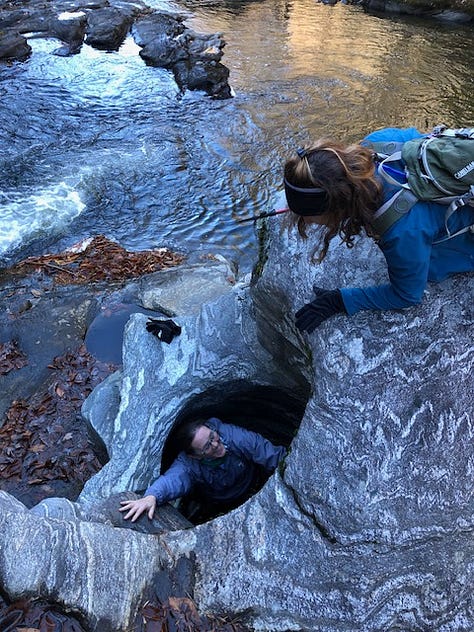
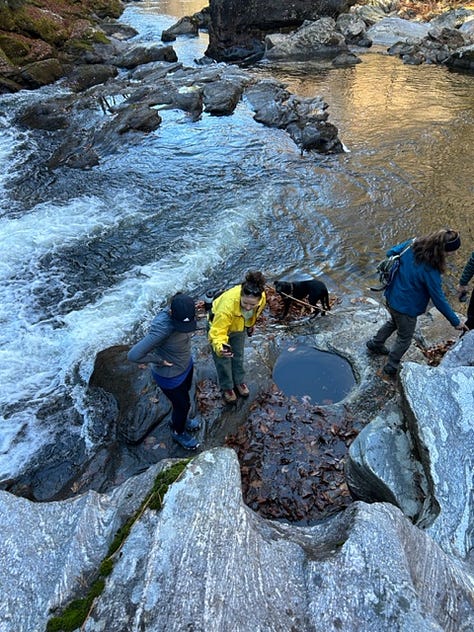
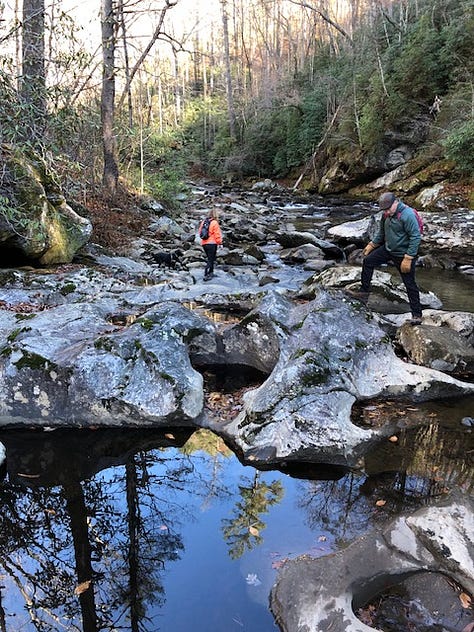
We also headed upstream to Holcomb Creek, which feeds into the Chattooga and contains very similar rock that’s easily carved by tumbling rocks:


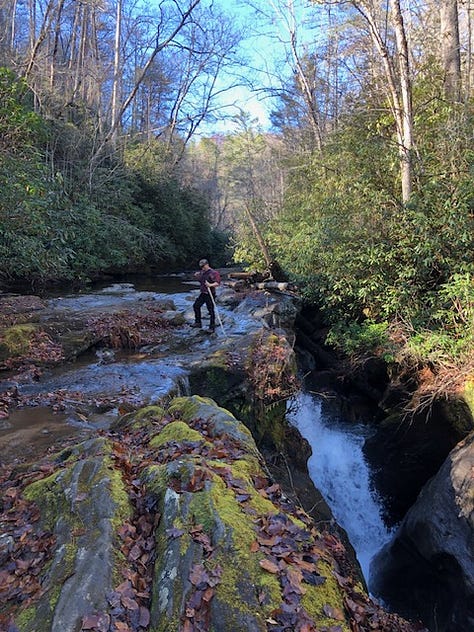
I hope you’re able to get outside and enjoy the wonders of nature yourself. If you find anything you “wonder” about, shoot me an email by replying to this email or leaving a comment, and I’ll see what I can find out!






